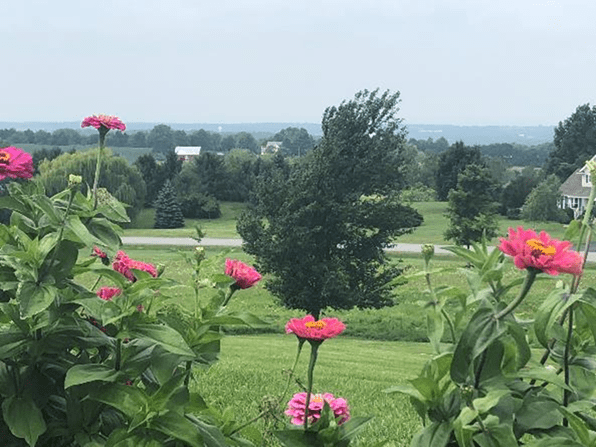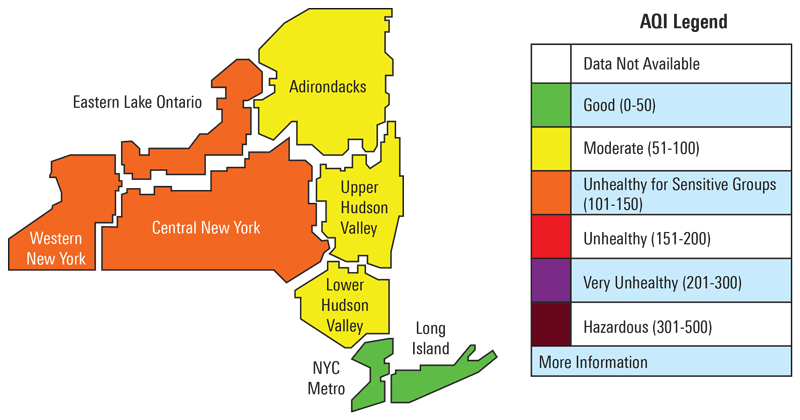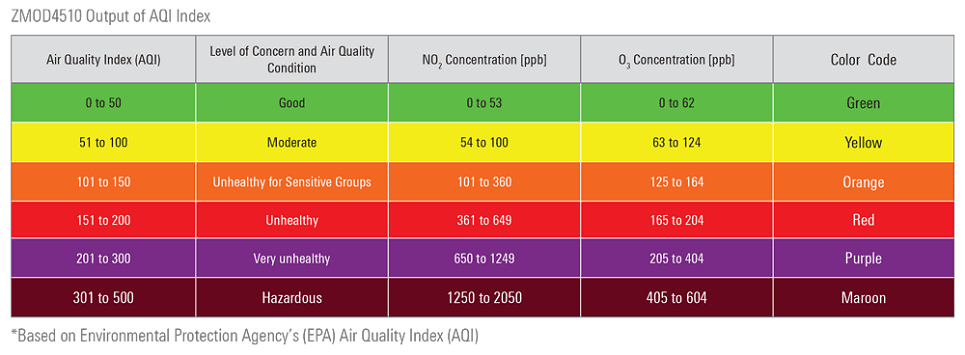Growing up in the Finger Lakes region of New York on a farm (Figure 1), the thought of bad air quality only came to us when manure was being spread in the fields. It appeared that this vast country of farm fields would not have anything harmful to our bodies.

Figure 1. Rural Farmland in Western New York
As it turns out, air quality can be harmful not only in large cities but in the country as well. There are two typical gases in the atmosphere that are harmful to us outdoors. Nitrogen Dioxide, from sources like combustion engines and low-level Ozone, is known as a formative gas. We typically find higher levels of Nitrogen Dioxide where there are many vehicles, particularly during peak traffic times while Ozone can form without notice or any indications.
This week I received a notice that the rural county that I grew up in, as well as all counties south of Lake Ontario (Figure 2), had unsafe levels of Ozone. Ozone is created when sunlight, temperature, VOCs and other gasses are present in specific ways. As with high levels of Nitrogen Dioxide, wind direction will impact air quality and its impact on the human body. The Environmental Protection Agency (EPA) has specific requirements for healthy air as it relates to both Ozone and Nitrogen Dioxide (Figure 3). These levels are quantified in parts per billion (ppb).


Figure 3. ZMOD4510 Output of AQI Index based on EPA Air Quality Index (AQI)
Studies have shown that outdoor pollutants not only affect those most vulnerable such as older people, children and those with underlying health conditions but also precipitates neurological disorders. Links between Parkinson’s, Alzheimer’s and cognitive decline can be attributed to poor air quality.
This may sound like doom and gloom but there are ways to mitigate unhealthy air and reduce our risks of health issues. The first thing that we need to do is measure air quality. This can now be done with low cost miniature digital sensors like the ZMOD4510 that are capable of running from battery power and small enough to fit into a wearable device. When there are gasses forming and the winds shift in your direction, these sensors can detect and report EPA levels of air quality. The same miniature sensors that can be found in wearables can be integrated into our HVAC systems and recirculate air rather than pull air indoors. Another option is to specifically target unhealthy gasses by remediating them with air purifiers that will turn on when unhealthy levels of gasses are present and filter them out.
As the sensor and systems proliferation takes place through IoT and smart systems, it won’t be long before our environment is quantified, and we won’t have to personally react to an unhealthy air situation as these devices will be looking out for our well-being. Harmful gasses will be eliminated, or we will automatically be warned of their presence. The only problem that will persist, as when I was growing up on a farm, will be the spreading of manure from cows. This will always be a part of rural life.
